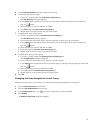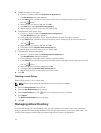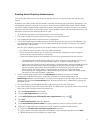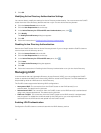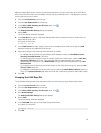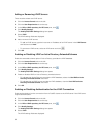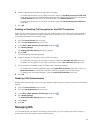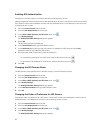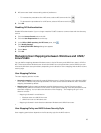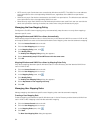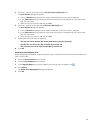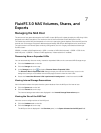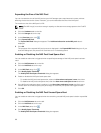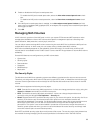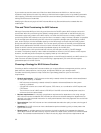
5. NIS servers are listed in descending order of preference.
– To increase the precedence for a NIS server, select a NIS server and click .
– To decrease the precedence for a NIS server, select a NIS server and click .
6. Click OK.
Disabling NIS Authentication
Disable NIS authentication if you no longer need the FluidFS cluster to communicate with the directory
service.
1. Click the Access Control tab on the left.
2. Click the User Repositories tab on the top.
3. In the NIS or LDAP repository for NFS users pane, click .
4. Click Modify Settings.
The Modify NIS/LDAP Settings dialog box appears.
5. Select None.
6. Click OK.
Managing User Mappings between Windows and UNIX/
Linux Users
You can define mappings between Windows users in Active Directory and UNIX/Linux users in LDAP or
NIS. This ensures that a Windows user inherits the UNIX/Linux user permissions, and a UNIX/Linux user
inherits the Windows user permissions, depending on the direction of the mapping and the NAS volume
security style.
User Mapping Policies
The user mapping policies include:
• Automatic mapping: Automatically map all Windows users in Active Directory to the identical UNIX/
Linux users in LDAP or NIS, and map all UNIX/Linux users to the identical Windows users. Automatic
mapping is disabled by default.
• Mapping rules: Define mappings between specific Windows users in Active Directory and the
corresponding UNIX/Linux users in LDAP or NIS. These specific mapping rules take precedence over
automatic mapping. You can select the direction of the mapping — the mapping can go in one
direction or both:
– Mapping is allowed in one direction:
* Windows users to a UNIX/Linux user
* UNIX/Linux user to a Windows user
– Mapping is allowed in both directions between Windows and UNIX/Linux users.
•
User Mapping Policy and NAS Volume Security Style
User mapping permissions depend on the file security style for the NAS volume:
83



